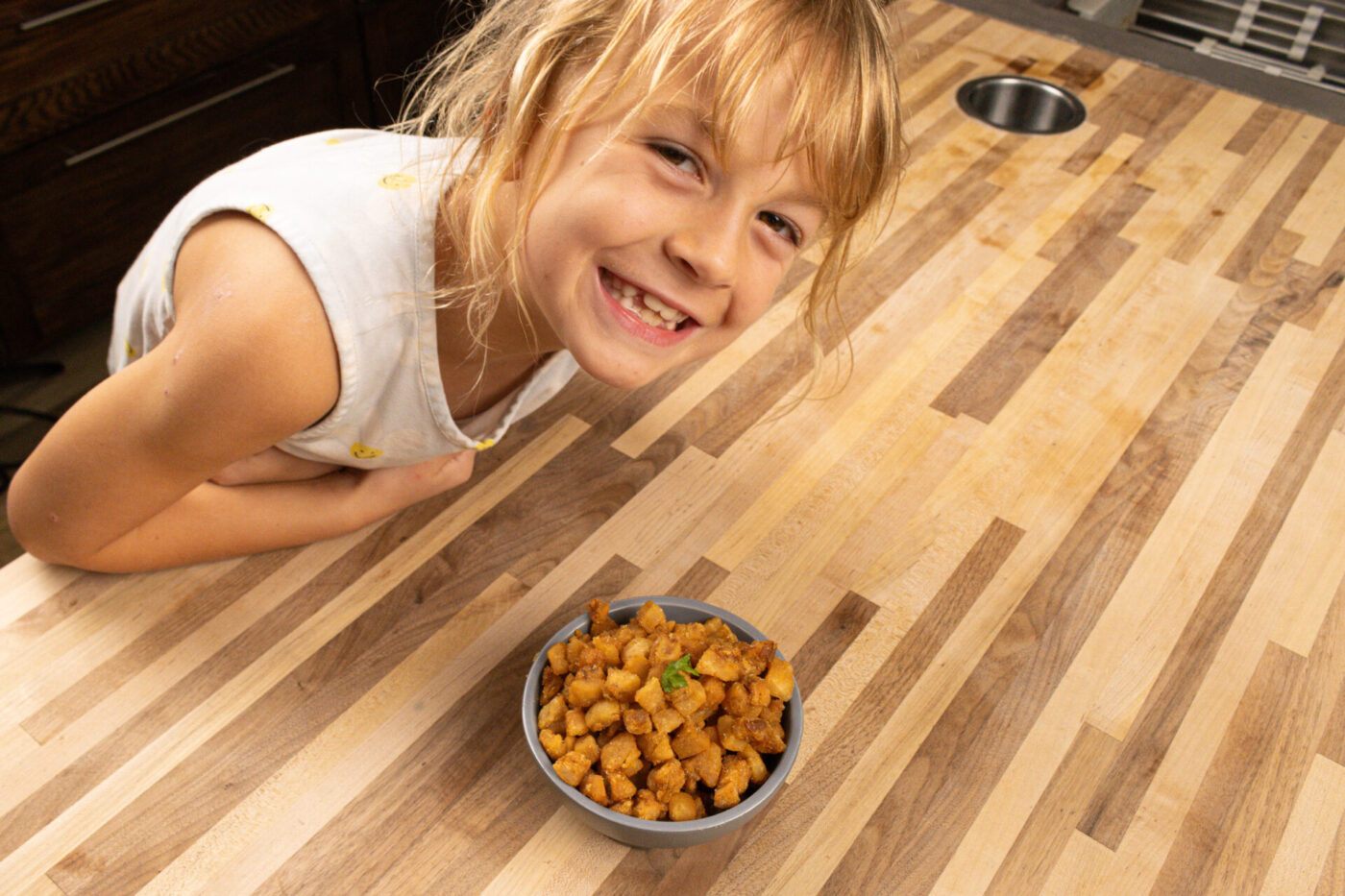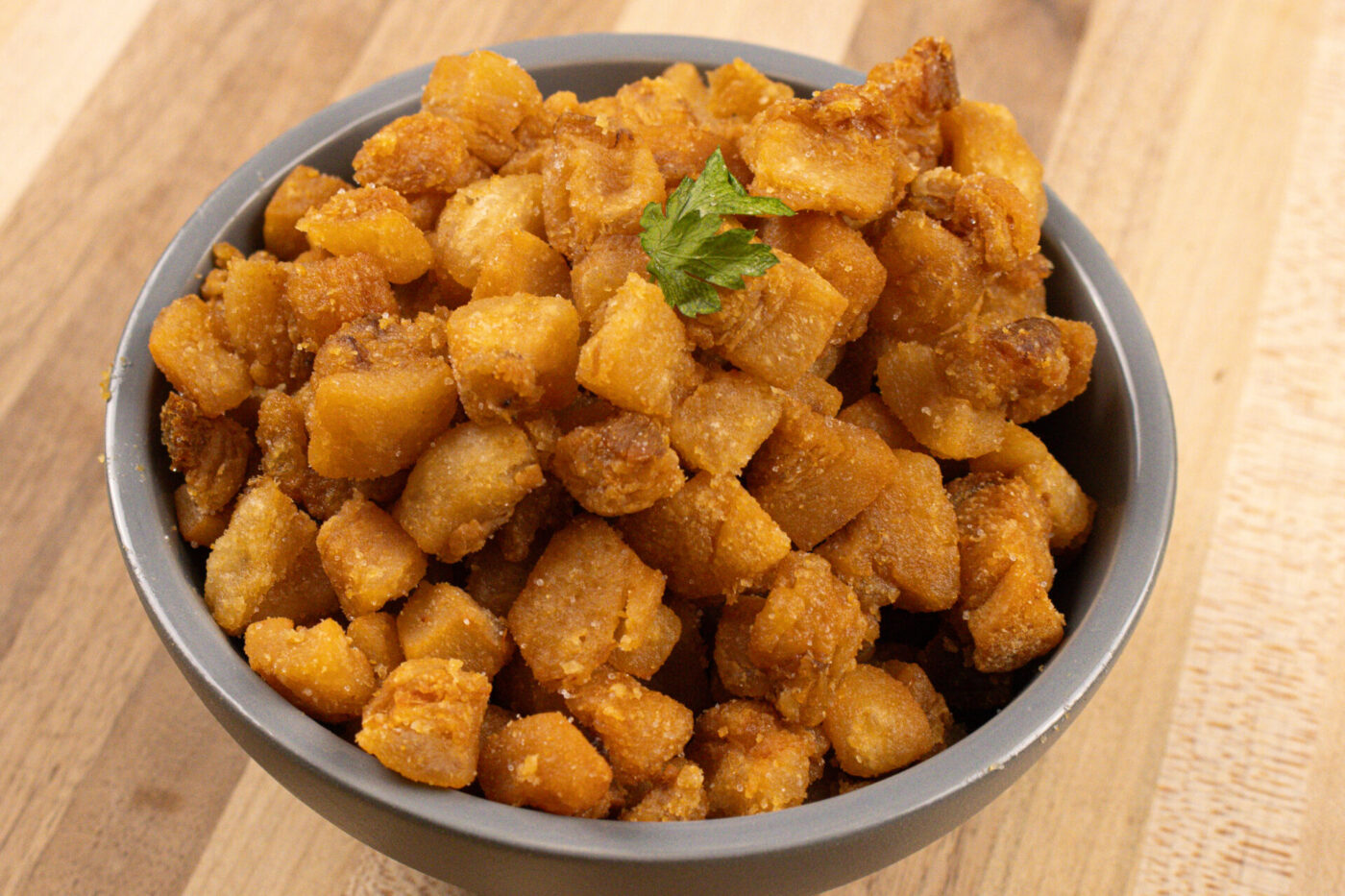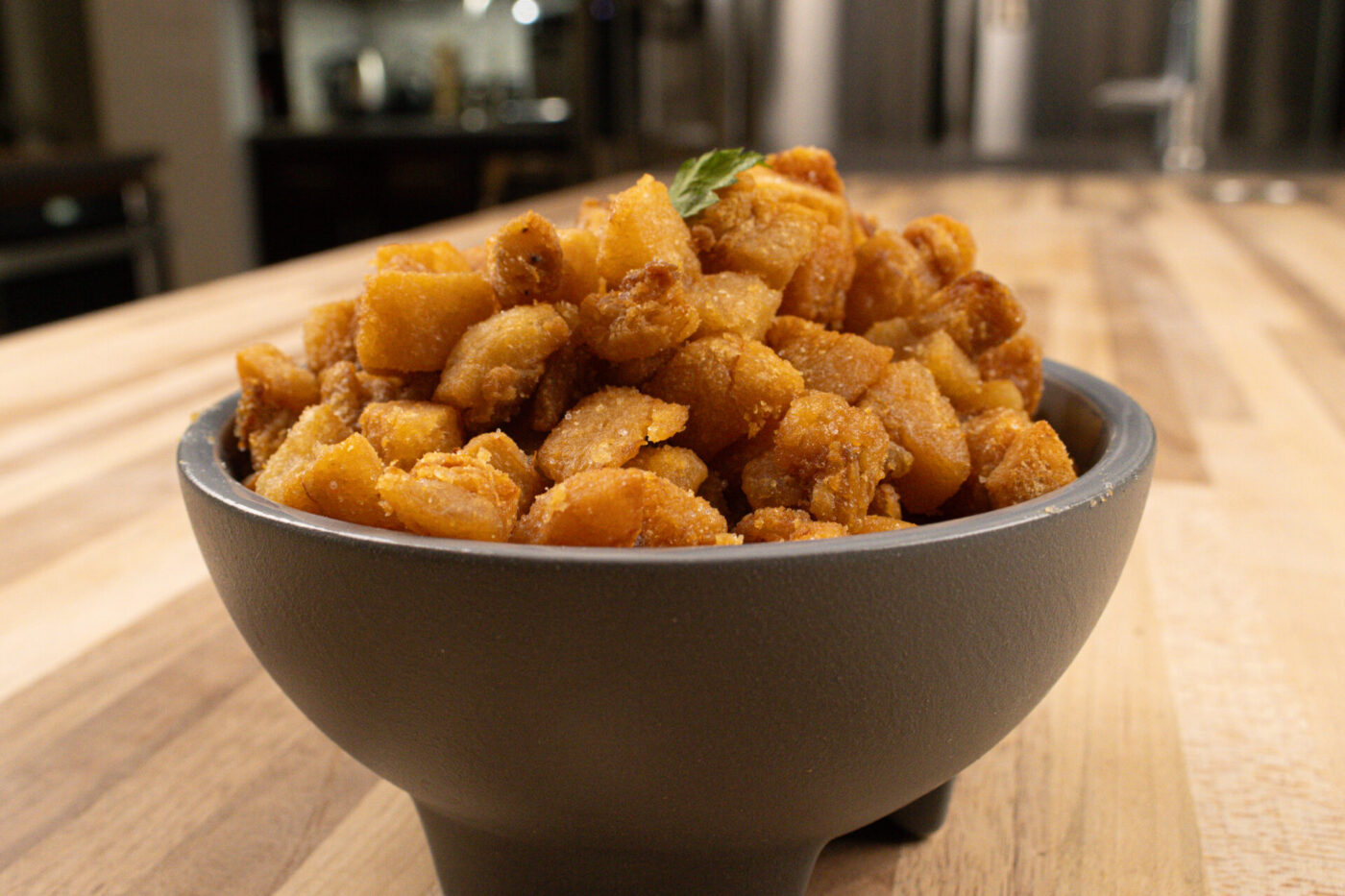Read More: History of Pork Cracklings (Škvarky)
From Ancient Stoves to Modern Tables: A Crispy History of Pork Cracklings (Škvarky) – An Expanded Journey
The satisfying crunch of a perfectly rendered pork crackling is a sound that echoes through centuries of culinary history. More than just a tasty snack, pork cracklings, known as “škvarky” in the Czech Republic, are a testament to human ingenuity, resourcefulness, and our enduring love for all things savory and delicious. Their story is interwoven with the domestication of pigs, the development of cooking techniques, and the cultural traditions of countless societies. From the earliest fireside experiments to their modern-day resurgence, cracklings have left their mark on the culinary landscape.
The Ancient Roots of a Crispy Delight: A Serendipitous Discovery
The story of pork cracklings begins with the pig itself, an animal whose fate became intertwined with our own. Wild boars were among the first animals domesticated by humans, with evidence suggesting this occurred as far back as 13,000–12,700 BCE in the Near East, specifically in the Tigris Basin. As humans transitioned from nomadic hunter-gatherer societies to settled agricultural communities, pigs became a vital source of sustenance due to their relatively quick growth, ability to thrive on scraps, and substantial meat yield. No part of the animal was wasted, and it’s likely that the process of rendering fat, which yields cracklings, was discovered early on, possibly even by accident.
Imagine an ancient hearth, flames licking at a clay pot or a simple spit over a fire. Perhaps a resourceful cook, tasked with preparing a recently butchered pig, noticed that the pork back fat and other fatty pieces, when exposed to heat, yielded a flavorful, rendered fat and crispy, edible bits. This accidental discovery would have been revolutionary, especially in a world without refrigeration. Rendered fat could be used for cooking, preserving other foods, and even as fuel for lamps, offering a valuable source of light and heat. The crispy byproduct – the ancestor of our beloved cracklings – would have been a welcome source of protein and energy, particularly appealing for its concentrated calories and portability.
Cracklings Through the Ages: A Culinary Evolution
As civilizations rose and fell, the pig remained a steadfast companion, and the practice of rendering fat continued to evolve alongside human culinary skills. Roman soldiers may have carried a form of cracklings with them on their campaigns, a convenient and long-lasting source of energy. Archaeological digs have unearthed evidence of pork consumption throughout the Roman Empire, supporting this theory.
Across the globe, diverse cultures developed their own methods for transforming pig pork back fat into crispy treats, influenced by local ingredients, spices, and cooking techniques. In Asia, evidence suggests that pork fat rendering was practiced in ancient China, and variations of cracklings appear in various Asian cuisines. As trade routes expanded, it’s possible that knowledge of this technique spread, influencing the development of similar dishes across continents.
Medieval Europe and the Rise of Peasant Cuisine
During the Middle Ages, pork continued to be a staple protein source in Europe, particularly among the peasantry. Pigs were relatively easy to raise, even in small spaces, and their ability to forage for food made them ideal for rural communities. The practice of preserving meat through salting, smoking, and rendering fat became essential for surviving the lean winter months.
In Central and Eastern Europe, pork cracklings became deeply embedded in culinary traditions. In the Czech lands, “škvarky” emerged as a staple, especially in rural communities where self-sufficiency was not just a virtue, but a necessity. The long, harsh winters necessitated preserving food, and rendered fat, known as “sádlo,” along with the crispy škvarky, played a crucial role in sustaining families through the cold months.
Škvarky: A Czech Culinary Icon – Tradition and Community
The Czech name “škvarky” is derived from the verb “škvařit,” meaning “to render” or “to fry out” fat. This linguistic connection highlights the core process behind their creation. Traditionally, making škvarky was a communal activity, often associated with the pig slaughtering season, a significant event known as “zabijačka.” This annual event was not just about butchering a pig; it was a social and cultural occasion, bringing families and neighbors together.
Families would gather to butcher a pig and process every part, ensuring nothing was wasted, in a display of respect for the animal and a testament to the value of hard work. The rendering of fat and the making of škvarky was a key part of this process, a labor-intensive but rewarding task. The aroma of rendering fat would fill the air, a scent that still evokes nostalgia for many Czechs today.
Škvarky were not just a byproduct; they were a cherished culinary ingredient in their own right. They found their way into a variety of traditional dishes. “Škvarkové placky,” savory pancakes enriched with cracklings, are a testament to their versatility. “Škvarková pomazánka,” a flavorful spread made with ground cracklings, onions, and spices, is a beloved appetizer or snack, often served with fresh bread. These dishes, passed down through generations, highlight how škvarky became integral to Czech cuisine. They were, and still are, considered the perfect accompaniment to a cold Czech beer, the salty crunch and rich flavor contrasting beautifully with the crisp, refreshing brew.
A Global Phenomenon: Variations on a Crispy Theme
While škvarky hold a special place in Czech cuisine, they are far from a unique phenomenon. Across the world, cultures have independently discovered the joy of crispy pork fat, adapting the preparation to their own tastes and culinary traditions. In Mexico and other parts of Latin America, “chicharrones” are a beloved street food and ingredient. They are often seasoned with chili and lime, reflecting the region’s vibrant flavors. Chicharrones can be found in tacos, stews, or simply enjoyed as a snack.
In the Philippines, “chicharon” is a popular snack and a key component of various dishes, such as “pancit palabok,” a flavorful noodle dish. Filipino chicharon can be made from different parts of the pig, resulting in variations in texture and flavor.
The American South boasts its own rich tradition of “pork rinds” or “cracklins,” often enjoyed with hot sauce or barbecue seasoning. These are often a byproduct of the region’s long history of hog farming and barbecue culture. In Spain, “torreznos” are a popular tapa, typically served in bars with a cold drink.
The Modern Crackling: A Resurgence and Reinvention
Today, pork cracklings are experiencing a resurgence in popularity, transcending their traditional role as a rustic food. With the rise of low-carb and ketogenic diets, their naturally low carbohydrate content has made them a favored snack, a guilt-free indulgence for those watching their carb intake.
Gourmet chefs are also rediscovering their versatility, incorporating them into innovative dishes to add texture and a burst of umami. They might be crushed and used as a coating for meats, sprinkled over salads for added crunch, or even incorporated into desserts for a surprising savory element. This modern renaissance demonstrates the enduring appeal of pork cracklings and their ability to adapt to evolving culinary trends.
More Than Just a Snack: A Cultural and Culinary Legacy
Pork cracklings, or škvarky, are more than just a crispy snack. They are a link to our culinary past, a tangible connection to generations who came before us. They represent a testament to human resourcefulness, a demonstration of how our ancestors made the most of available resources. They are also a symbol of cultural traditions that have endured for centuries, passed down through families and communities.
From ancient hearths to modern kitchens, the simple act of rendering pork fat has yielded a delicious and versatile food that continues to delight palates around the world. So, the next time you enjoy the satisfying crunch of a pork crackling, take a moment to appreciate the long and flavorful history behind this humble yet extraordinary treat. You’re partaking in a culinary tradition that spans millennia and continents, a testament to the enduring power of simple, delicious food and its ability to connect us to our past, our cultures, and each other. The story of the pork crackling is far from over, and its crispy, savory legacy will undoubtedly continue to be written for generations to come.




Comments